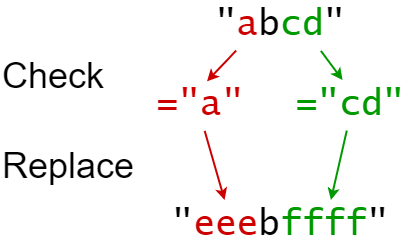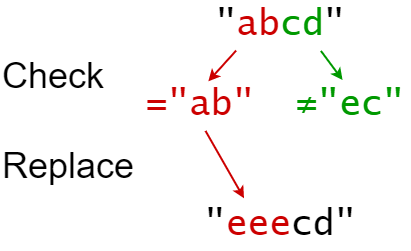Date
Aug 15, 2023
need_review
type
undo
难度
中等
你会得到一个字符串
s (索引从 0 开始),你必须对它执行 k 个替换操作。替换操作以三个长度均为 k 的并行数组给出:indices, sources, targets。要完成第
i 个替换操作:- 检查 子字符串
sources[i]是否出现在 原字符串s的索引indices[i]处。
- 如果没有出现, 什么也不做 。
- 如果出现,则用
targets[i]替换 该子字符串。
例如,如果
s = "abcd" , indices[i] = 0 , sources[i] = "ab", targets[i] = "eee" ,那么替换的结果将是 "eeecd" 。所有替换操作必须 同时 发生,这意味着替换操作不应该影响彼此的索引。测试用例保证元素间不会重叠 。
- 例如,一个
s = "abc",indices = [0,1],sources = ["ab","bc"]的测试用例将不会生成,因为"ab"和"bc"替换重叠。
在对
s 执行所有替换操作后返回 结果字符串 。子字符串 是字符串中连续的字符序列。
示例 1:

示例 2:

提示:
1 <= s.length <= 1000
k == indices.length == sources.length == targets.length
1 <= k <= 100
0 <= indexes[i] < s.length
1 <= sources[i].length, targets[i].length <= 50
s仅由小写英文字母组成
sources[i]和targets[i]仅由小写英文字母组成
解法1
条件1: sources[i]能否在s的指定位置找到(indices[i]).
True → 替换targets[i]
False → pass
条件2: 替换操作不会影响索引
→ 额外开一个字符串
时间空间复杂度都是
